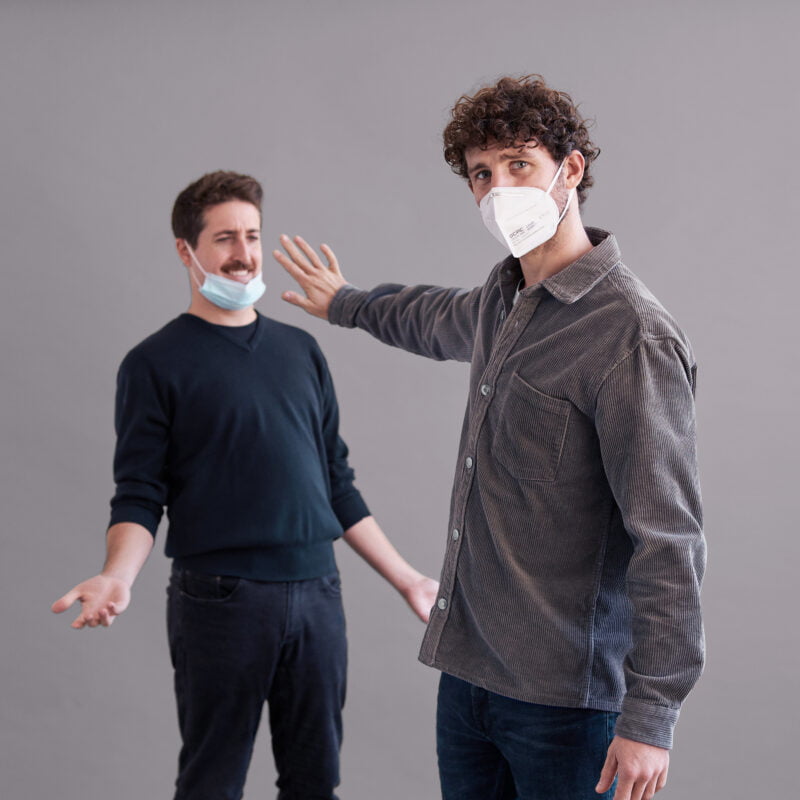Uncategorized
Ultimate Guide To COVID-19 Masks (And Which Actually Work)
Countries across the globe have mandated face coverings to reduce the spread of the COVID-19 pandemic.
There are lots of different types of face coverings but not all are suitable for reducing the spread of COVID-19.
We’re here to share the science-based research and straight facts about which masks work.
After reading this guide, you’ll be able to make the best decision for yourself, your family, and your business on which masks are most protective.
Respirator Masks, Surgical Masks, and Cloth Masks: What’s The Difference?

RESPIRATOR MASKS
Respirator masks are the highest performing masks against COVID-19.
They are tested and given a “particle filtration efficiency” (PFE) rating. This PFE tells you how effective the mask is at filtering out tiny particles.
When choosing a mask to protect you against COVID-19, make sure it has a PFE of 95% or higher.

Wearing a respirator mask (as long as it doesn’t have a valve) protects the wearer from spreading respiratory droplets that can contain viruses (like the coronavirus), and from inhaling them.
The most commonly known respirator is the “N95 respirator,” but there are many respirators that protect the wearer and people around the wearer. These include KN95s, FFP2s, and FFP3s.
(Don’t worry, we’ll explain what each of those means in just a minute.)
Because they’re the highest protection level, those in healthcare settings wear respirator masks as personal protective equipment (PPE) against infectious disease.
IT’S BETTER TO CHOOSE RESPIRATOR MASKS WITHOUT VALVES
Respirator masks with valves do not protect those around you.
When wearing a mask with a valve, moisture from the breath escapes through the valve.
Unfortunately, releasing respiratory droplets is the exact opposite of what an effective mask should do to stop the spread of COVID-19.
SURGICAL MASKS

Surgical masks, also known as “medical masks,” or “3-ply masks” are the blue masks you see being dispensed most often in stores.
Regulated by the FDA, they are designed to be worn by surgeons and designed for one time use, to protect patients in surgery from being exposed to the surgeons’ respiratory droplets.
The term “medical mask” can be incredibly confusing. When people are looking to buy masks, they assume if it’s “medical,” it protects the wearer.
Unfortunately, that’s not true.
Unlike the respirator face mask, which has two-way protection, 3-ply masks only protect those around the wearer instead of the wearer themselves.
CLOTH FACE MASKS
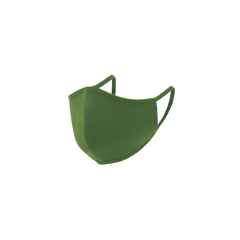
There are no regulations, standards, or tests in place for cloth face masks.
Wearing a cloth mask is likely more effective than wearing no mask at all,
however they are not as effective at protecting you against COVID-19 as wearing a respirator mask.
Unlike respirator masks, cloth masks are not tested or regulated by the CDC, FDA, or any other governing body.
Cloth masks are useful when made of more than one layer, according to early evidence.
(A nylon neck warmer, for example, is only a single layer of cloth fabric and does not prevent the spread or contraction of COVID-19. Surprisingly, it can increase the spread.)
“FACE COVERINGS”
“Face covering” is a broad term to describe anything that covers the face. It is an entirely unregulated term that anyone can use for anything that goes over the face. There are face masks for skiing and removing wrinkles. A “face mask” can be made of anything from cheesecloth or a cut up t-shirt to kevlar and cucumbers.
Takeaways:
- 3-ply and fabric masks do not protect the person wearing them.
- Respirator masks have a 95% or higher Particle Filtration Efficiency and, when worn correctly, help protect you and the people around you.
Particle Filtration Efficiency (PFE): Why It Matters
There are two types of tests used to regulate masks:
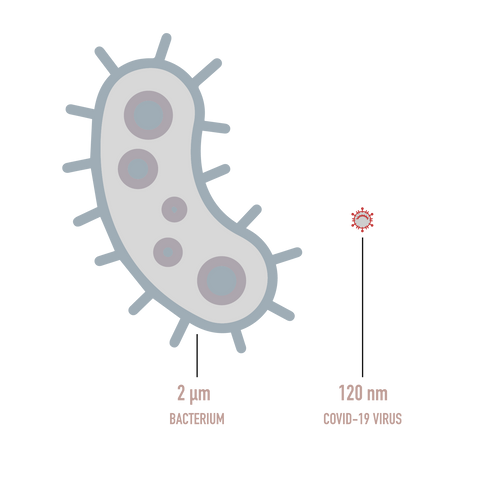
- Bacterial Filtration Efficiency: This test measures filtration of particles that are 3 microns or larger (the size of bacteria).
- Particle Filtration Efficiency: This test measures particles’ filtration at the sub-micron level—meaning it measures the filtration of particles smaller than one micron. One example of a sub-micron is a particle put into the air from an aerosol can or a virus. PFE is the test that’s important to determine the right mask to use against COVID-19 because it’s a virus.
Knowing the difference between how masks are tested and rated is essential because while bacteria and viruses are both causes of infectious disease, bacteria are giants compared to viruses.
To protect against COVID-19, make sure the mask is tested for Particle Filtration Efficiency.
Let’s put this in another context: If your goal is to build a fence to keep out pests, the type of pest will determine your fencing. A fence made of wood with large slats could keep out a bear (bacteria), but it wouldn’t do much to keep out a mosquito (viruses). PFE is tested by securing the respirator down, blowing particles through it, then measuring how many particles transmit through the respirator.
It’s important to note that these tests depend on having a good seal around the entire mask.
Masks that filter 95% or more of the particulate during testing have a “PFE of greater than 95%”, which is the standard recommended for filtering out viruses.
3-ply masks are tested based on Bacterial Filtration Efficiency, which means small particles can pass through the material. While they do provide some protection by stopping respiratory droplets from spreading, they do not provide a seal around the face and do not protect the person wearing them.
Takeaways:
- When looking for a mask, you want something that rates the Particle Filtration Efficiency (rather than Bacterial Filtration Efficiency or BFE).
- Your mask is only as good as the seal around your nose and mouth.
- Masks that are made of fabric, or are 3-ply, that don’t seal around your nose and mouth, don’t protect you.
So, Who Should Wear A 3-Ply Or Fabric Mask?
Every choice regarding health falls on a spectrum.

Health experts the world over have clear evidence that face masks reduce the spread of the COVID-19 virus.
So, wearing any mask with more than one layer will help protect the people around you, at least some. And that’s better than doing nothing at all.
When better options are in short supply, even if you’re unconcerned about your own health, wearing a cloth face covering or 3-ply mask will help reduce the risk that people around you will contract coronavirus from you.
Wear a mask anytime you’re unable to maintain a distance of at least 6 feet from someone (i.e., grocery stores and public transportation) or are indoors for prolonged periods.
Now, that said, if you’re looking to provide face masks to your employees, organization, or even family – you also have the choice of “not great > okay > good.”
The “okay” option of fabric and cloth masks or 3-ply masks will only protect the people exposed to the wearer if they’re wearing them correctly and at all times — and they do not protect the person wearing them.
By wearing less than the best mask, the fate of your health (or the people you buy them for) will depend on every person around them wearing a mask and wearing it properly.
Considering that only half of Americans are consistently wearing masks, and some refuse to wear them at all, the best mask is one where you have a PFE of greater than 95%.
When everyone is wearing a good mask with 95% or greater PFE, if one person slips up or wears it improperly, everyone else is still protected.
Rather than relying on everyone else to follow all of the proper guidelines, wearing the proper mask yourself, puts the fate of your health back into your own hands.
Takeaways:
- Buying or providing respirator masks is the single best way to put control of your health back into your own hands (or the hand of your employees) during the COVID-19 pandemic.
Respirator FAQ’s
WHAT ARE THE DIFFERENT TYPES OF RESPIRATOR FACE MASKS?
Respirator face masks include ratings such as N95, KN95, FFP1, FFp2, and FFP3.

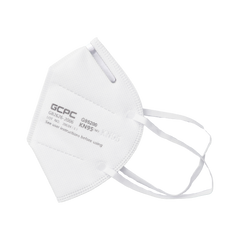
They are the most effective of all available face masks against COVID-19 due to their ability to filter tiny airborne particles (as small as .3 micron).
They have a large success rate, filtering out up to 95% of these particles and large droplets such as bodily fluids.
A properly fitted respirator provides a seal around the nose and mouth, leaving room for minimal leakage around its edges when inhaling.
A respirator mask is the only mask that provides two-way protection for both the wearer and those they come in contact with, making it the most effective choice.
The name differences come from who the governing body is that tests and regulates them.
- “N” rated masks are tested by NIOSH in the USA.
- “FFP” rated masks are tested by the UK.
- “K” rated masks are tested in China.
Regardless of where the respirators originated, the CDC confirms the performance of many of them with their own tests.
You can view the test reports here.
WHO SHOULD WEAR A RESPIRATOR MASK? (SHOULD NON-HEALTHCARE WORKERS WEAR THEM?)
Everyone who can and wants to wear a respirator mask should. Respirator masks are the single most affordable and effective way to stop the spread of the novel coronavirus.
While during the initial onset of the COVID-19 pandemic, there was a shortage of respiratory masks, this is no longer the case. Especially respirators that aren’t provided by hospitals such as KN95’s.
Wearing the best form of respiratory protection in public spaces or around vulnerable people will not only keep you protected, it will keep frontline health care workers from being overwhelmed by sick people contracting the virus.
IS THERE A SHORTAGE OF RESPIRATOR MASKS?
There is currently no shortage of respirator masks. While there was an initial shortage, the supply chain has caught up, and there are enough respirators to go around.
IF THERE’S NO SHORTAGE OF MASKS, WHY AM I HEARING ABOUT FRONT LINE WORKERS STILL NOT HAVING THEM?
Why there are still shortages in hospitals and for frontline workers is unclear to us here at Good Mask Co.
Medical supply companies are reporting across the country that hospitals are not ordering more PPE and respirator masks despite doctors and healthcare workers reporting that they’re being forced to reuse N95’s for days, if not weeks on end. (Instead of changing them between each and every patient).
And while we’d love to donate directly to doctors, many hospitals will not fit test doctors for donated PPE, forcing them to reuse N95’s until they’re dangerously ineffective.
If you or someone you know has either a better understanding of why hospitals are not ordering more PPE, or you’re a doctor or hospital who is still looking for PPE, please contact us at [email protected].
We’d love to help.
ARE RESPIRATOR MASKS REUSABLE?
Under normal circumstances, the CDC and general health guidelines recommend immediately disposing of respirators after one use.
WHAT IF I NEED TO REUSE A RESPIRATOR? WHAT SHOULD I DO?
While we’re able to help anyone who needs access to N95s and KN95s—there may be circumstances where wearing a respirator more than once is necessary.
If that’s the case for you or your company, here are the current best practice guidelines for respirator re-use during a workday:
- Bring multiple respirators with you in a clean plastic bag.
- Bring a second ziplock bag with you marked “used.”
- Each time your respirator is removed or touched, place it in the “used” bag and put on a clean respirator.
- At the end of the day, place your used masks in direct sunlight. (The dashboard of a car is a popular spot).
- Leave the respirators in direct sunlight for three days, and place back into a clean plastic bag for reuse.
- If any part of the respirator becomes damaged at any point (an ear loop falls off, the nose piece breaks, there’s visible dirt or makeup inside or outside of the mask), dispose of it.
SHOULD I WAIT TO BUY RESPIRATORS UNTIL FRONTLINE WORKERS HAVE IT?
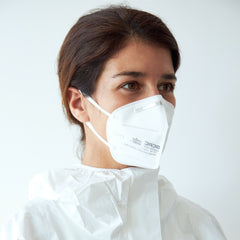
There’s no need to wait. Not only do we have plenty of supply, wearing the proper protection will keep frontline workers from being overwhelmed.
We can work with any agency seeking N95 respirators.
And for anyone concerned with using N95 stock, we have KN95 masks in stock with the same level of protection for a third of the cost.
We’re also partnering with organizations to make sure people who need PPE are getting it.
SO, WHICH TYPE OF MASK DO I NEED?
The best mask to protect both you and the people around you is a mask that’s certified to have a Particle Filtration Efficiency (PFE) of above ≥95%.
These masks are designed specifically to filter out viruses and are the highest performing masks against viruses like COVID-19.
Other masks (like surgical masks and face masks) may protect your respiratory droplets from spreading. However, they’re not nearly as effective as masks tested to have above a 95% Particle Filtration Efficiency.
All of our Good respirator masks meet or exceed 95% PFE and have been third-party verified, so you have the highest degree of safety for both you and those around you.
No matter which mask you choose, their efficacy depends on how you take them on and off and consistently wear them.
We’ve found people touch them the most when their glasses fog, so here’s how to take masks on and off (or as the medical professionals say, “don and doff” your face masks) and how to keep your glasses from fogging while wearing them.
HOW TO PUT ON & REMOVE A FACE MASK
Wearing a face mask combined with other preventative measures such as regular hand washing and social distancing can help slow the spread of COVID-19.
However, it is of the utmost importance that masks are put on and removed correctly to ensure they actually work.
Instructions For Putting on a Face Mask
- Ensure you have cleaned your hands with soap and water or an alcohol-based hand sanitizer
- Inspect the mask and ensure there are no holes or tears
- Identify which side is the top (likely stiff and bendable)
- Hold the mask by the ear loops and place around each ear
- If the mask has a stiff, bendable edge, pinch this until it fits snugly around your nose
- Secure the mask around your nose and chin
Instructions For Removing a Face Mask
- Ensure you have cleaned your hands with soap and water or an alcohol-based hand sanitizer.
- Avoid touching the front, exposed part of the mask.
- Remove both ear loops, touching this part of the mask only.
- Safely dispose of the mask.
- Once again, clean your hands with soap and water or an alcohol-based hand sanitizer.
HOW TO PREVENT YOUR GLASSES FOGGING WHILE WEARING A FACEMASK:
We’ve tested three ways to prevent glasses from fogging while wearing a face mask.
- Make sure there’s a tight seal around your nose bridge. Place your glasses on top of (and in front of) the seal on your nose bridge.
- Place a small piece of tissue paper along the bridge of your nose below the nose seal of the mask.
- Take a single drop of dish soap and rub it onto both sides of your glasses lens. Then use cold water to rinse the lenses. Let them air dry. The dish soap will provide a small protective layer.
The Biggest Takeaways:
- Choosing the right mask is on a spectrum that ranges from “Not Great” to “Good”.
- Any mask is better than none.
- A good mask is a respirator mask with a PFE of 95% or higher.
- Your mask is only as effective as how you take it on and off, and if you wear it consistently.
- The more people who adopt mask-wearing in public and around the vulnerable, and the more people with access to good masks, the less time we’ll all need to wear them.

